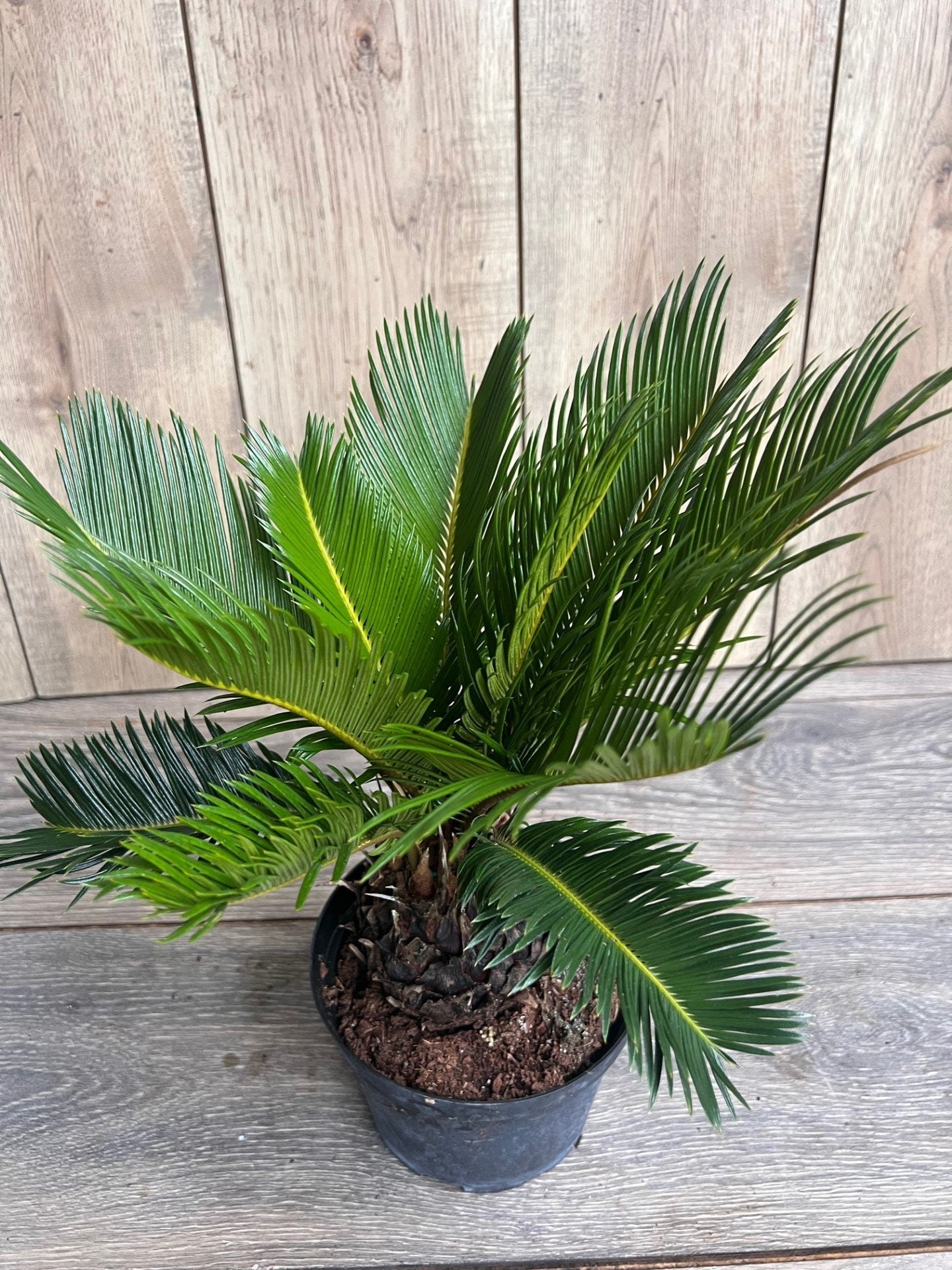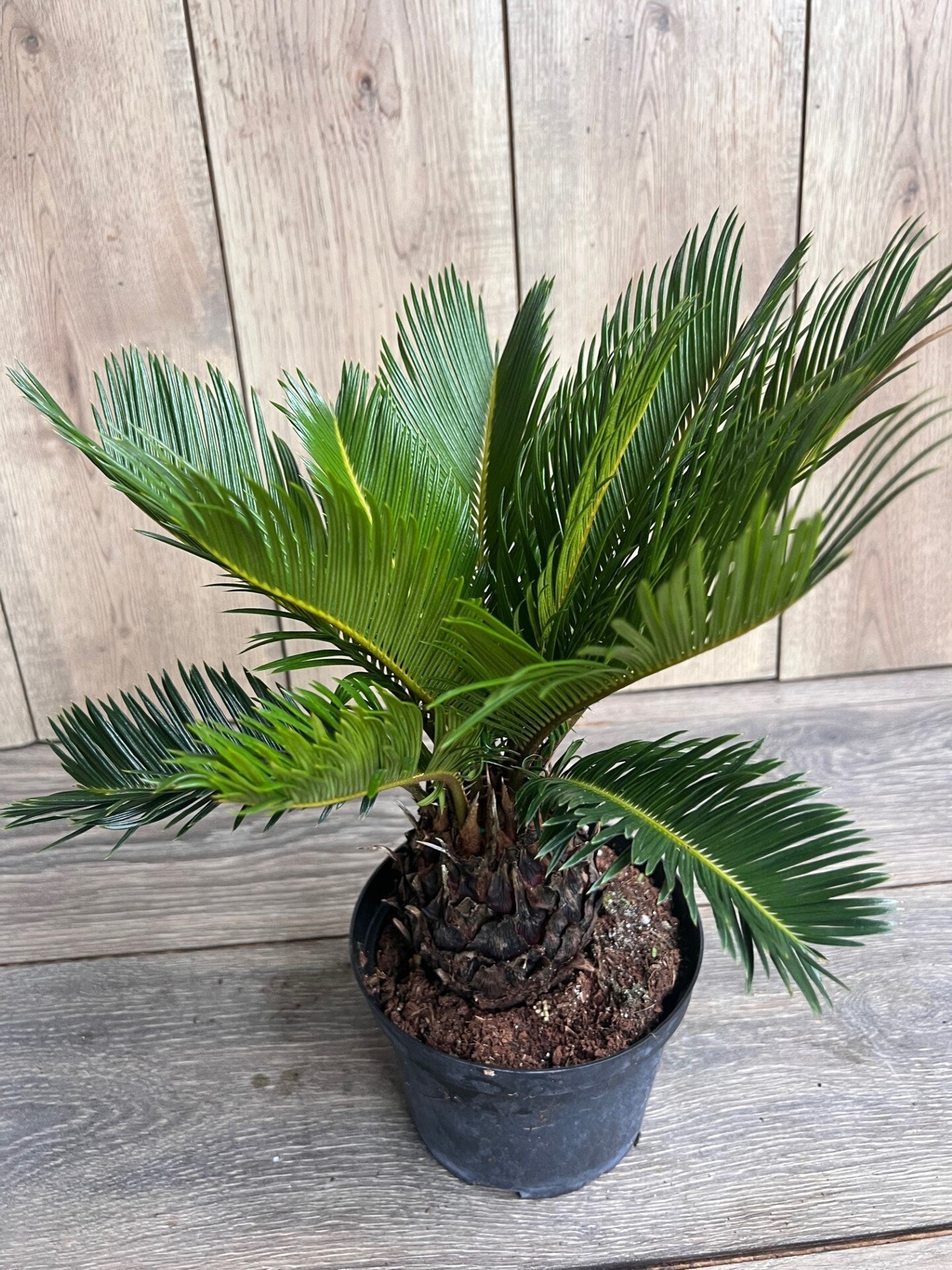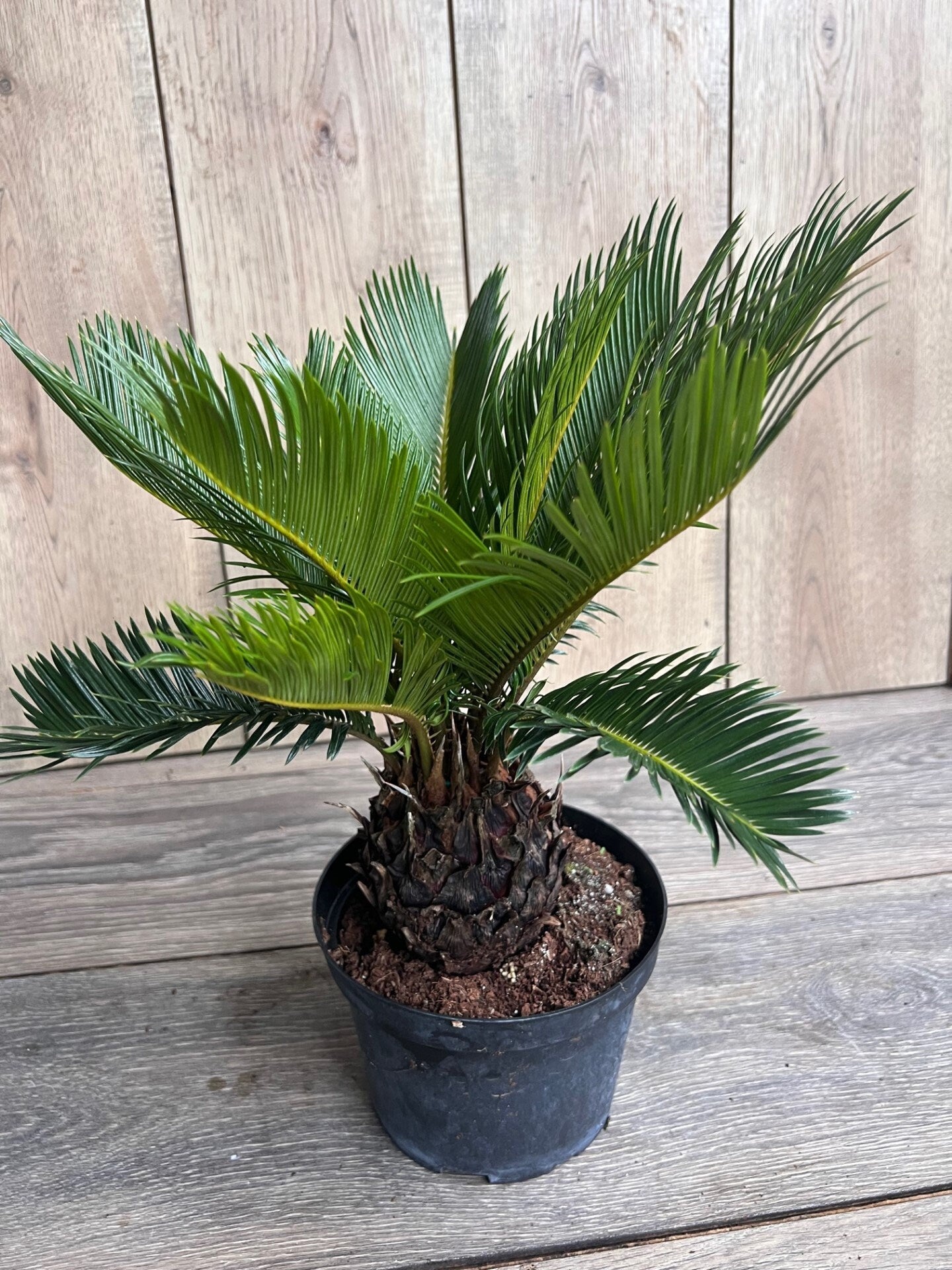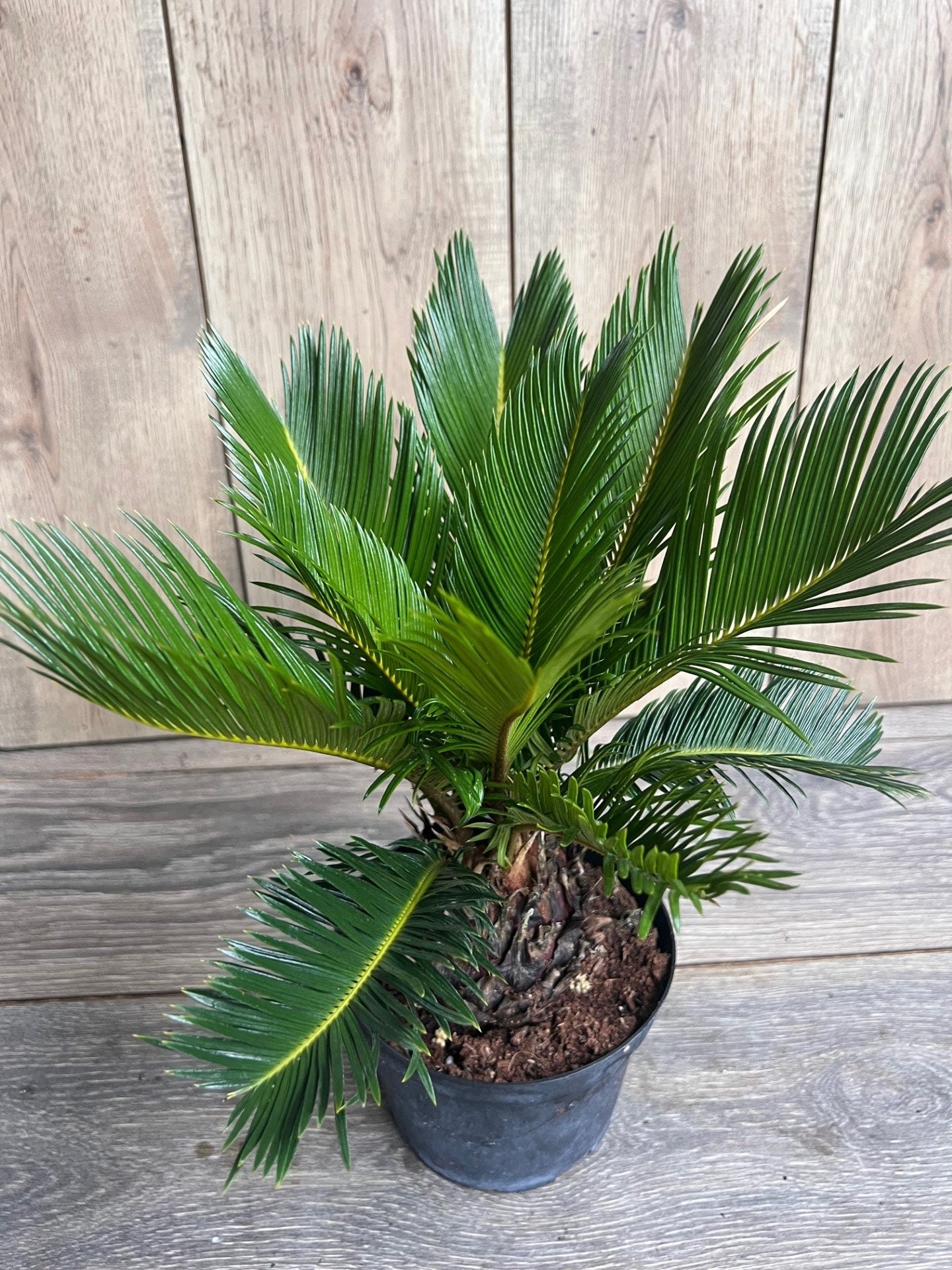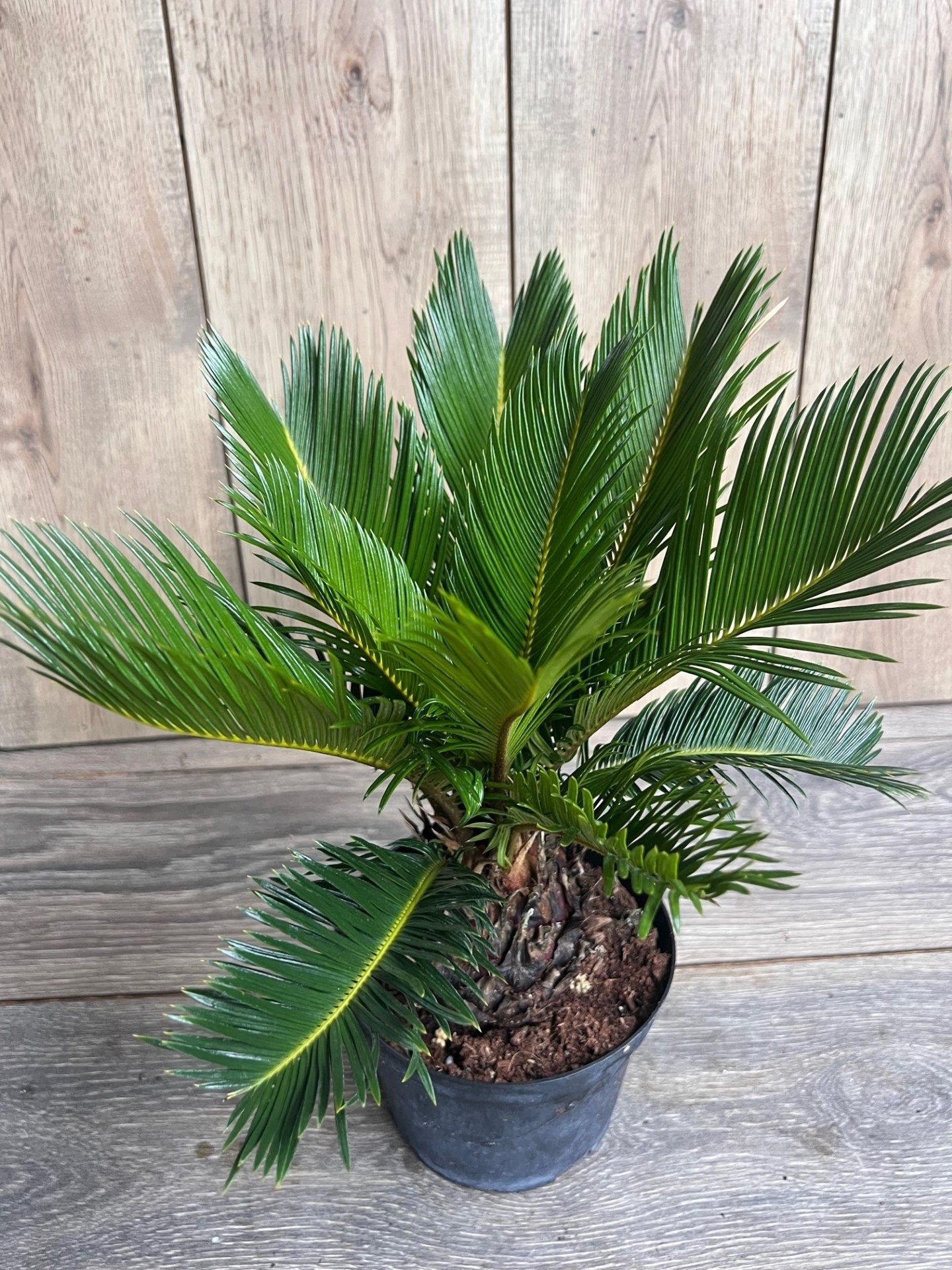1
/
of
6
King Sago Palm 6" inch pot, Cycas revoluta
King Sago Palm 6" inch pot, Cycas revoluta
Regular price
$26.28 USD
Regular price
$35.04 USD
Sale price
$26.28 USD
Unit price
/
per
Shipping calculated at checkout.
Couldn't load pickup availability
Note: You will receive a King Sago palm in 6" similar to the pictures
The King Sago Palm (Cycas revoluta) is a striking, slow-growing evergreen native to southern Japan, often mistaken for a true palm due to its palm-like appearance. This cycad features a rosette of feathery, dark green fronds that can reach up to 3 feet long, and a stout trunk that can grow 6-10 feet tall over time, though its growth is very slow. Despite its palm-like look, the King Sago Palm is a gymnosperm, producing seeds rather than flowers. It's a popular ornamental plant in gardens, landscapes, and as a decorative indoor plant in tropical and subtropical climates.
Care Tips for King Sago Palm:
1. Light Requirements
- Bright, Indirect Light: King Sago Palms thrive in bright, indirect light. They can tolerate some direct sunlight, but prolonged exposure to harsh midday sun may cause leaf burn. Indoors, place near a window with plenty of natural light but out of direct sunlight. Outdoors, they can grow in partial shade to full sun, depending on the climate.
2. Watering
- Moderate Watering: Water thoroughly, but let the soil dry out between waterings. Avoid waterlogged soil to prevent root rot. Water when the top 1-2 inches of soil feel dry. In winter or dormancy, reduce watering as the plant requires less moisture.
- Well-Draining Soil: Use well-draining soil such as cactus mix or a sandy loamy mix. Ensure containers have drainage holes to prevent water from collecting at the roots.
3. Soil Requirements
- Well-Draining, Slightly Acidic Soil: King Sago Palms prefer slightly acidic to neutral soil (pH 6.1-7.5). Avoid heavy, clay-like soils that retain too much moisture. For container growth, add perlite to regular potting soil for better drainage.
4. Temperature and Humidity
- Warm Temperatures: Prefers temperatures between 60°F and 85°F (15°C - 29°C) and is sensitive to cold. Protect from temperatures below 50°F (10°C). In cooler climates, grow indoors in a pot that can be moved inside during winter.
- Low to Moderate Humidity: These palms do not require high humidity but will do better in slightly humid conditions. Indoors, if the air is very dry, consider using a humidifier or a humidity tray.
5. Fertilizing
- Fertilize in Spring and Summer: Use a balanced, slow-release fertilizer or one designed for cycads with an NPK ratio of 8-8-8 or 10-10-10. Fertilize once in early spring and again in mid-summer. Avoid fertilizing in fall and winter when the plant is dormant.
- Avoid Over-Fertilizing: Over-fertilizing can cause nutrient burn. Always follow the fertilizer's instructions carefully.
6. Pruning and Maintenance
- Remove Dead Fronds: Regularly remove yellowing, dead, or damaged fronds to keep the plant looking tidy. Use clean, sharp scissors or pruning shears.
- Clean Fronds: Occasionally wipe the fronds with a damp cloth to remove dust, helping the plant photosynthesize more efficiently, especially if grown indoors.
7. Pests and Diseases
- Common Pests: King Sago Palms are generally pest-resistant but may attract mealybugs, scale insects, or spider mites, especially indoors. Treat infestations with insecticidal soap or neem oil.
- Root Rot: Overwatering and poor drainage can lead to root rot. Ensure the soil dries out between waterings and the pot has proper drainage. Remove affected roots if rot occurs.
8. Repotting (For Container-Grown Trees)
- Repot Every 2-3 Years: King Sago Palms grow slowly and typically need repotting every 2-3 years or when they outgrow their pot. Use a container 1-2 sizes larger and fresh, well-draining soil.
- Handle Roots Gently: When repotting, be gentle with the roots to minimize transplant shock.
9. Pollination and Reproduction
- Male and Female Cones: King Sago Palms produce cones rather than flowers. Male trees produce cylindrical cones, and females produce rounder ones. These cones can be pollinated by wind or insects outdoors. Indoor plants may not produce cones unless conditions are ideal.
- Growing New Plants: Seeds from the cones can be planted to grow new plants, though this is a slow process and requires warm temperatures and well-draining soil for germination.
10. Toxicity
- Toxic to Pets and Humans: All parts of the King Sago Palm, especially the seeds, are toxic due to the presence of cycasin. Keep the plant out of reach of children and pets, as ingestion can lead to serious health issues.
Share
